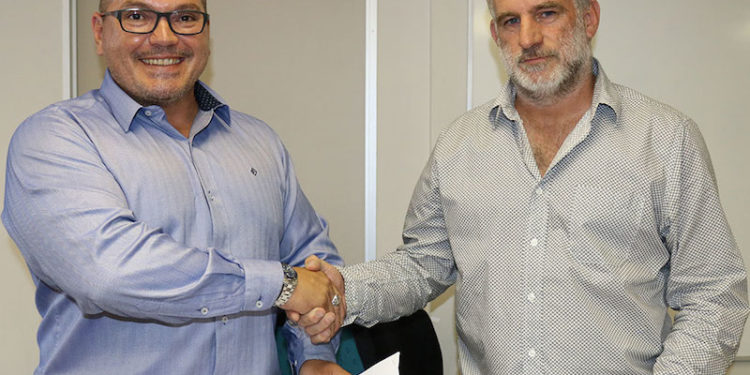A Code of Conduct signed by the South African Deep-Sea Trawling Industry Association (SADSTIA) and the South African Hake Longline Association (SAHLLA) is expected to dramatically reduce conflicts between trawlers and longline fishing vessels that target hake on the same fishing grounds.
The Code of Conduct was signed in Cape Town earlier this week by the chairs of the two fishing associations, Tim Reddell of SADSTIA and Clyde Bodenham of SAHLLA.
‘Conflicts arise from time to time, usually because of a lack of communication,’ said SADSTIA secretary Johann Augustyn, explaining that in the past longline fishing gear has been lost when trawlers have mistakenly trawled over it. This has resulted in claims against trawling companies.
The Code of Conduct sets out a protocol for both trawlers and longline fishing vessels to follow on the trawl grounds. It requires a vessel’s officers to use visual contact, radar or the maritime identification system AIS to determine whether there are any other vessels in the area before they begin fishing. Each skipper must announce via VHF radio their intention to begin fishing and provide their approximate start position and the course that their vessel will take. They may only proceed with gear deployment once they have communicated adequately with the vessels in the vicinity.
‘Communication between vessels is the key to this Code of Conduct,’ Johann Augustyn said. ‘If adequate notifications are given and adequate responses are received, it is likely that we will see very few conflicts on the fishing grounds from now on.’
The Code of Conduct stipulates that communications should be conducted with courtesy and consideration by both parties, and it sets out the procedures to be followed if and when there are transgressions. Rather than individual skippers or fishing companies handling transgressions, these will be managed by the industry associations.
Clyde Bodenham welcomed the signing of the Code of Conduct, saying that it will lay the groundwork for better communication and cooperation between the two fishing sectors.









